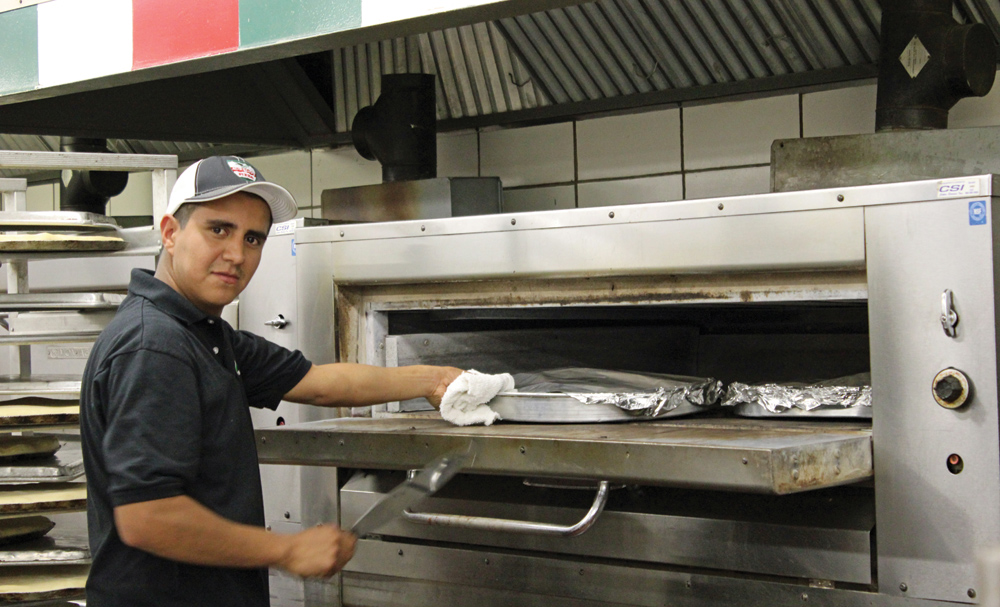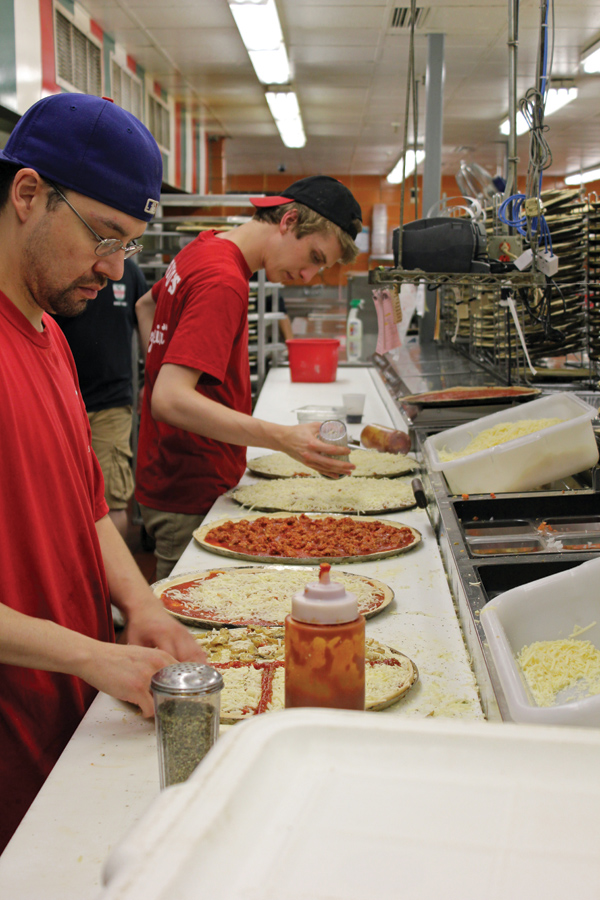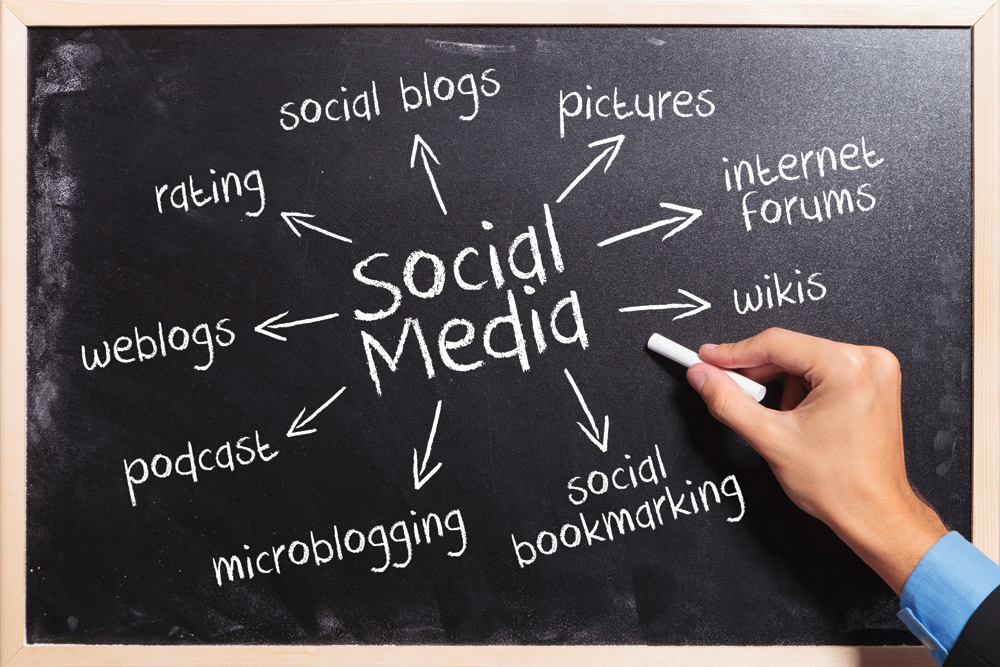Facebook, Twitter, Pinterest—you can’t get far into any conversation without hearing at least one of these popular social media websites mentioned. As a pizzeria operator, you know you need to either jump onto the social media train or, if you’ve already boarded, add some fuel to your efforts. But who should take the wheel? Does your train need more than one boxcar? And where should it go? If you’re scratching your head as you try to figure out your social media plan, this article will offer practical insights gained through experience. At Aurelio’s Pizza (aureliospizza.com), we have been using social media since 2010 and, through trial and error, we’ve learned a few things that could help you.
If you’ve been wavering over whether to launch a social media campaign, stop wringing your hands and just do it. Social media provides terrific brand exposure that opens an ongoing dialogue between your company and your customers. It takes word-of-mouth to an entirely new level and humanizes your brand. Google loves it, and it can be used to boost your website’s overall ranking on search engines. And, most importantly, your customers—and your competitors—are already using it.
Even so, social media cannot replace traditional marketing. Attracting and keeping customers will always require a mix of marketing strategies. In multichannel marketing, there are reach channels, which position your pizzeria for purchase consideration; depth channels, which enable you to tell your story; and relationship channels, which help you better serve your existing customers. Social media is an excellent tool for your relationship marketing strategy.
 |
|
A venerable pizza concept dating back to 1959, Aurelio’s Pizza, founded by Joe Aurelio, takes a very modern approach to marketing, capitalizing on social media to generate brand exposure and build relationships with customers. |
Tell, Don’t Sell
Social media is like a cocktail party. If you show up holding a sign that reads, “Buy my pizza!” you’ll be the obnoxious, overbearing guest who quickly gets shunned and left standing alone in a corner. Many restaurant operators mistakenly use social media to push out a steady stream of “sell” messages to their audiences without taking the time to first establish relationships. This is a turnoff that will get you “unliked” and, worse, unloved.
Most social media platforms serve as recreational sharing forums, and people participate in order to be entertained. They pay the most attention to information that either engages or benefits them. In other words, don’t hit them over the head with a “buy my pizza” message. Tell, don’t sell. Build a relationship with your customers; lure them in with charm and humor, engage and enlighten them, and then remind them that you’ve also got some great deals on the best pizza and wings in town.
When it comes to forming social media relationships that yield results, the key is to add value to the conversation. This may sound like marketing-speak, but it’s very similar to real-life conversations: If you’ve got something interesting to say, other people will feel a connection and want to keep talking—and listening—to you. The same goes for social media dialogue. Yes, you can mention your latest promotion or even create a special promotion exclusively for your social media fans or followers, but these “selling” messages should only comprise about 15% of your content. The other 85% should be interesting information that you are in a unique position to share. If you’re selling 85% of the time and connecting only 15% of the time, you will never connect at all.
—Kirk Mauriello, Auriello’s Pizza
The Big Three
Between Facebook, Twitter and Pinterest, not to mention Foursquare and LinkedIn, there is no lack of choices in social media outlets. All of them can work for your restaurant if you use them correctly and consistently, and many work together for greater success. But each one works differently, and how you use them should reflect and respect your audience’s needs.
For starters, you should not feel pressured to use all of the social media platforms just because your customers likely use many or most of them. First, consider your goals, content and man-hours. Social media sites are free, but the labor needed to build relationships that further brand loyalty is not. You’ll want to research the sites thoroughly and understand what constitutes success with each of them. Remember, your business and your customers are local. Followers in Abu Dhabi aren’t eating your pizza. So take some time to learn the platform that you choose. Start out by creating a personal account before starting a business page. Observe how others are using the format and take note of what type of content appeals to them and what turns them off. Here is a brief overview of the big three social media sites:
Facebook. With 1.06 billion monthly active users worldwide, Facebook is a terrific forum for talking with customers, learning about their top-of-mind interests, announcing specials and getting feedback. It’s helpful for inspiring and testing new ideas and hearing authentic opinions. It’s both a visual and a verbal forum, allowing you to post pictures of your food, tout upcoming specials and events, solicit customers’ input and promote contests.
Twitter. Especially popular with younger people, Twitter has 200 million active users and is like a micro-TV spot that followers must be logged on to catch. It’s mostly a verbal forum (with a strict 140-character limit), and it’s fast-moving, with tweets and retweets popping up constantly, so it’s most effective with frequent users. Success on Twitter relies heavily on building and maintaining relationships, so survey your customers and make sure that they’re using Twitter regularly before committing to it yourself.
Pinterest. This is primarily a visual forum, an online corkboard for photographs, articles, recipes and videos that reflect a vast range of personal interests, from art and cooking to home furnishings and clothing. A recent Shareaholic study shows that Pinterest, with its 25 million users, now drives more referral traffic than Twitter. If you have a lot of great pictures of your pizzas, salads and other menu items and know how to be creative with them, Pinterest might be a good platform for you. You can also post pictures of your ingredients, staff in action, customers and recent events.
What makes one social media platform better than another? Nothing, really—it’s not about “better,” it’s about how you use the platform and what’s most effective for you. Business is a numbers game—your marketing effort needs to drive traffic. To say that Facebook is better than Twitter is like saying TV advertising is better than print simply because you run a full-blown advertising campaign on TV and only one occasional ad in the newspaper.
Content Is Still King
As a pizza chain with 42 stores, Aurelio’s focuses on Facebook and Twitter, with Facebook getting the best results. To ensure brand consistency across numerous franchise locations, we use a franchise management system called Franconnect to corporately control and manage our Facebook content. Through Franconnect, we feed content to all of our stores’ individual pages and can also add location-specific content and develop trackable promotions. For us, gaining Facebook success has been about putting in the time to learn how to effectively use it. And we recognize that it would require a lot more time and effort to use additional forms of social media, such as Pinterest. We are not saying that you shouldn’t use other social media outlets, but we have learned that the more platforms you use, the less chance you’ll have to use any one of them to its fullest potential unless you’re able to dedicate a lot of time and manpower to it.
Many restaurant operators have found that Facebook is the best social media solution for their needs. But what kind of content should you post on Facebook, and how often should you post it? From what we’ve learned, posting once a day on Facebook is a good approach, and posting between 4 p.m. and 8 p.m. generates the most response. Of course, if you’ve got an upcoming event that you want to promote or a newsworthy announcement, feel free to post these as they occur. On the other hand, don’t post the same message more than once a day—this will be viewed as spam.
Short posts and photos get the most attention. Brands such as Oreo have elevated their use of in-the-moment posts and graphics to an art form that has earned consumer attention and admiration in both traditional and social media. Most people like to look at pictures of people they know, so take photos of your customers and post them on your page. If a customer comes in with an especially cute baby, toddler or twins in tow, ask permission to take a picture and post it on your page. The proud parents will then share your post with their friends, and you’ve just extended your restaurant’s reach to all of their friends, family members and acquaintances!
Did you sponsor a charity event recently? Post pictures and information about the amount of money that was raised. Have you added a new menu item? Post a mouthwatering photo and description of the ingredients. Do you give out an Employee of the Month award? Post the winner’s picture and a brief bio every month. Did a famous person recently dine in your restaurant? With the celebrity’s permission, take a photo and post it—perhaps the celebrity will even give you a quote about how much he or she enjoyed your pizza!
Above all, provide information that will help your customers get to know your business better. Then pay attention to what your customers say in response. Engage them in a conversation whenever you can and always bring value to the discussion.
Finally, you can grow your fan base by cross-promoting your Facebook presence in your more traditional forms of communication, such as e-newsletters, printed materials and websites. These approaches help to build momentum in your social media campaign—we’ve noticed that the more “likes” we get, the faster they’ll keep coming, because we look like a company that people want to interact with.
 |
|
Spotlight your pizza makers, servers and other employees by offering an Employee of the Month award and featuring the winners on your Facebook page, suggests Kirk Mauriello, from Aurelio’s Pizza. |
Promoting Posts
So what’s so great about being “liked” on Facebook? “Likes” tell you how many “fans” your Facebook page has, and it also tells you how these folks are responding to your content. In the latter sense, a “like” is a customer’s way of saying, “Hey, I saw that post, and I liked it!”
In addition to trying to add value through our traditional posts, we have used Facebook promotions to push offers and test redemption response rates among our 22,000-plus fans. For promotions, we use a mix of viral and paid reach. Viral reach refers to the number of Facebook users who have seen something that we posted in the traditional manner for free. Paid reach is the number of additional people who saw a post that we paid Facebook to promote on our behalf. (Paid promotions on Facebook can cost as much or as little as you’re willing to pay. A payment of $4.99 can help one post reach up to 1,500 people, while $19.99 can bring an estimated reach of between 3,300 and 6,100 people.)
We once created a post for a special offer of two medium, one-topping pizzas for $21.50. Our viral reach for that post was 108,183, with 2,834 Facebook users “talking” about it (“talking” is a term that refers to user engagement with a particular post). It received 161 “likes,” 91 “shares” and 49 comments. Additionally, 1,657 people claimed the offer (by downloading it). That’s a lot of love, right? However, less than a handful of the offers were actually redeemed during the promotion’s period of validity!
So was it all for naught? Not at all. We saw a spike in business that Friday. So we repeated the experiment and noticed the same result each time. A Facebook promotion on a Monday or Tuesday led to a business spike on Friday. We believe that these promotions plant the seed in customers’ minds. Seeing Aurelio’s on their Facebook newsfeed on Monday helps customers to remember that they want our pizza on Friday.
For now, Facebook will remain Aurelio’s social media train. As we continue to grow, we may add more boxcars—new social media tools—when we see their value. As you contemplate your own marketing efforts, social media—whether it’s Facebook, Twitter, Pinterest or some other platform—may be right for you if you want to deepen your relationship with existing customers and help them spread the word about your product to new ones. But social media is very much an “effort made equals results achieved” equation. While some businesses question the monetary value of their social media strategies, we have learned that, when we use Facebook and adapt to its increased functionality, it makes our cash registers ring.















